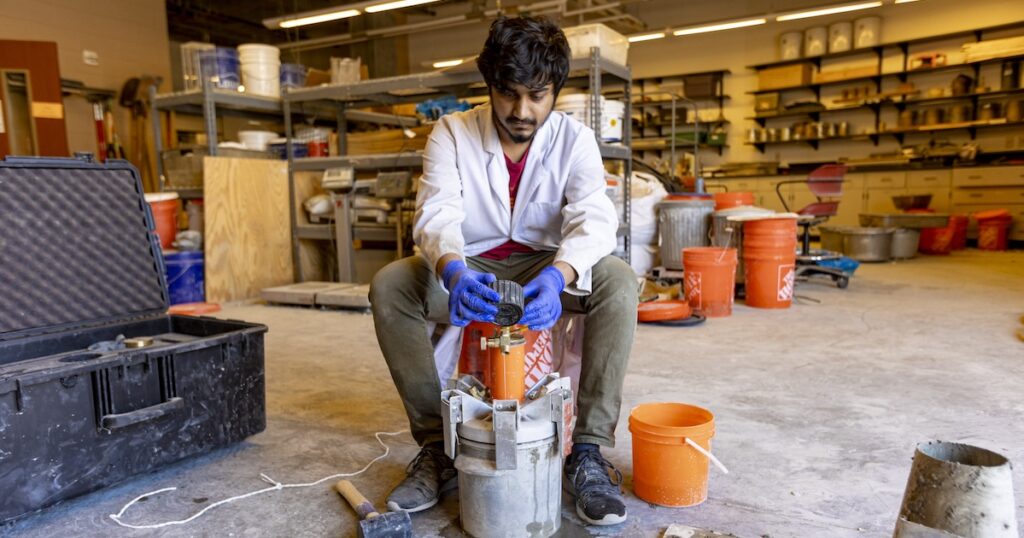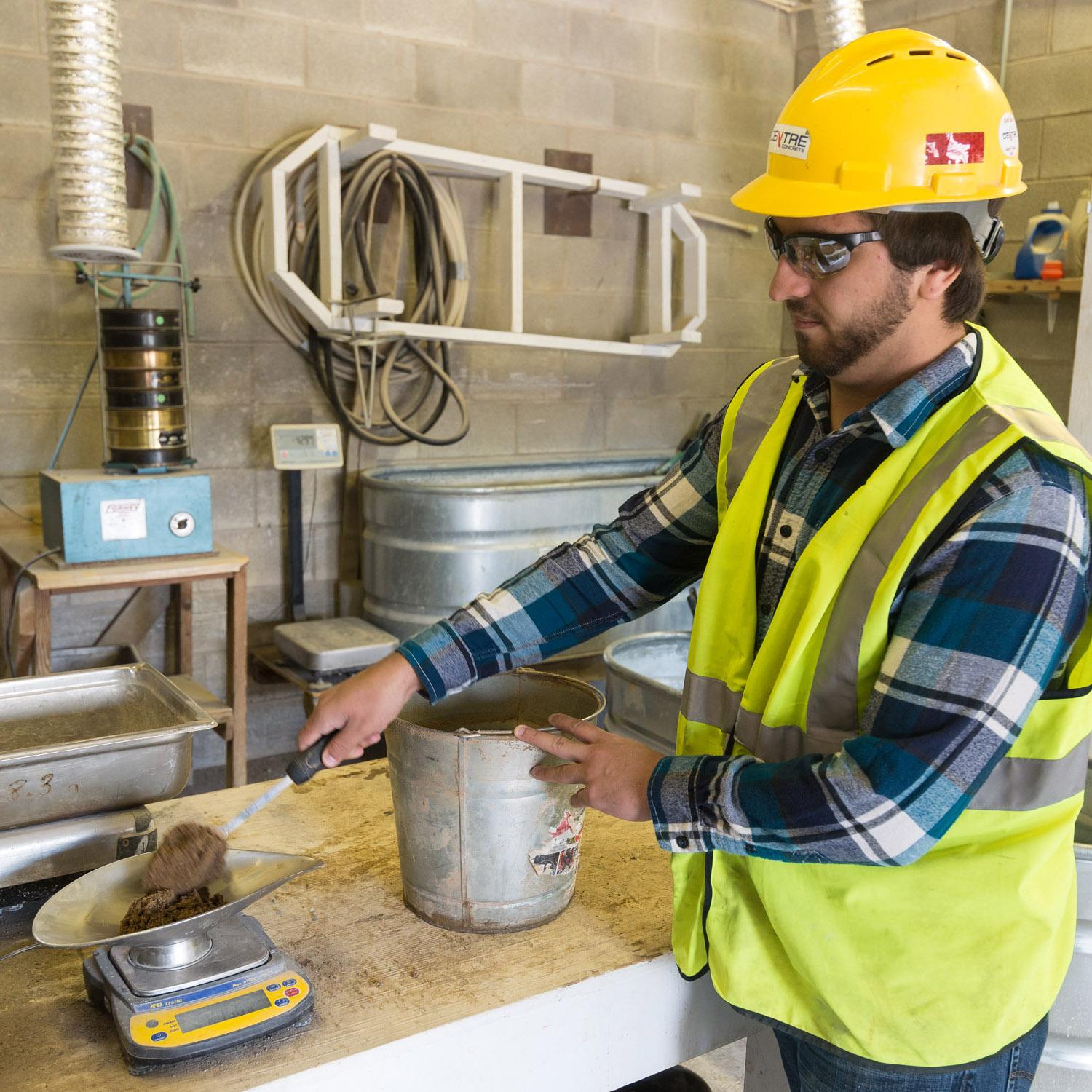The Crucial Duty of Concrete Foundation in Structural Honesty and Long Life
When it pertains to developing a building, the structure is much more crucial than you might assume. Concrete foundations supply unmatched toughness and longevity, ensuring your framework can endure various ecological challenges. Without a strong base, you run the risk of possible issues like moving or splitting, which can endanger safety and value. Understanding the nuances of concrete structures can be the secret to maintaining your financial investment for many years to come. What should you take into consideration next?
Understanding the Significance of Concrete Foundations
Concrete foundations are important to the total security of any kind of framework, as they give the crucial support needed to withstand various loads and environmental problems. When you think of constructing a home or an industrial area, the foundation is the initial thing you ought to consider. It functions as an obstacle against moisture, safeguarding your building from water damage. A well-placed concrete structure likewise avoids settling and changing, which can bring about splits in walls and floors. You'll wish to guarantee that the foundation is properly designed and enhanced, as this influences the long life of your building. Furthermore, a solid structure can boost power performance by decreasing air leaks. Bear in mind, ignoring the value of a concrete structure can cause expensive repair work down the line. So, buying a high quality foundation upfront is important for the stability and toughness of your structure.
Benefits of Concrete Foundations for Structural Integrity
While many elements add to a structure's structural stability, concrete foundations supply unrivaled longevity and strength. You'll appreciate that concrete can hold up against extreme weather, withstanding both wetness and temperature fluctuations. This durability indicates your structure is much less likely to experience cracking or moving in time, which can compromise its safety.Additionally, concrete's fundamental weight gives a solid base, preventing movement throughout natural occasions like earthquakes or floods. When you pick a concrete foundation, you're likewise going with reduced maintenance; unlike timber, it will not rot or bring in pests, conserving you time and money in repairs.Moreover, concrete's fire resistance offers included safety, guaranteeing your structure can endure heats without significant damage. In general, spending in a concrete structure means you're prioritizing the lasting security and stability of your building, making it a wise option for any type of construction project.
Typical Kinds of Concrete Foundations
When it concerns constructing structures, recognizing the common sorts of concrete structures can help you make educated options for your task. One of the most common types consist of slab-on-grade, crawl area, and complete cellar foundations.A slab-on-grade foundation is a basic, cost-efficient choice, where a thick concrete piece is put directly on the ground. This kind functions well in warm environments, as it minimizes warm loss.Crawl room foundations elevate the home somewhat above ground, permitting air flow and access to pipes and electrical systems. This design can help stop dampness issues.Full basement structures offer additional living or storage room while providing excellent architectural assistance. They require even more excavation and are typically utilized in colder environments to avoid frost heave.
Elements to Consider When Creating a Concrete Structure

Best Practices for Setting Up Concrete Foundations
When you're installing a concrete structure, proper website prep work is important to assure security (West Coast GE Concrete contractors). You'll likewise require to recognize reinforcement techniques to boost strength and resilience. Don't ignore the curing procedure, as it plays an essential duty in accomplishing a solid structure.
Site Prep Work Relevance
It might appear simple, correct site prep work is important for ensuring a solid and resilient concrete structure. Beginning by clearing the location of any kind of debris, plant life, or natural product that could jeopardize the structure's honesty. Next, evaluate the soil type and compaction; you could require to excavate or include products to develop a secure base. Degree the ground to ensure even weight circulation and avoid settling concerns in the future. Setting up correct drainage systems is likewise vital to protect against water buildup, which can weaken the foundation gradually. Finally, define the foundation's dimensions precisely to assist the putting procedure. By following these actions, you'll set the stage for an effective concrete foundation that stands the examination of time.
Support Techniques Described
When the website is correctly prepared, the following step in assuring a strong concrete foundation includes applying efficient reinforcement methods. You must begin by utilizing steel rebar, which provides tensile toughness and aids protect against cracking. Lay the rebar in a grid pattern, making certain it rises making use of spacers to preserve proper protection. Furthermore, consider utilizing wire mesh for additional assistance, especially in locations based on heavy lots. Do not fail to remember to connect the rebar crossways firmly with cable. For bigger foundations, fiber reinforcement can enhance sturdiness, decreasing the risk of shrinkage cracks. Constantly adhere to neighborhood building ordinance and guidelines to make certain conformity. By applying these reinforcement techniques, you'll substantially enhance your foundation's stamina and longevity, laying a solid groundwork for your structure.
Healing Process Basics
To assure your concrete structure treatments correctly, it's crucial to preserve adequate moisture and temperature level conditions promptly after pouring. Beginning by covering the surface with a wet burlap or plastic sheet to retain moisture. This maintains the concrete moisturized, stopping cracks and ensuring toughness. You must additionally keep track of the temperature; perfect curing problems are in between 50 ° F and 90 ° F. If it's as well warm, haze the surface on a regular basis to avoid quick evaporation. For winter, take into consideration utilizing shielding blankets to keep warmth. Purpose for a curing duration of at the very least seven days, as this is essential for optimum stamina growth. By complying with these ideal techniques, you'll enhance your structure's toughness and longevity, guaranteeing structural honesty for years to find.
Upkeep of Concrete Structures for Durability
To keep your concrete foundation strong and enduring, regular inspections are important. You ought to also assure reliable drain options remain in location to avoid water damages. If you find any type of cracks, resolving them immediately will conserve you from bigger issues down the line.

Routine Inspections and Assessments
While normal assessments and analyses could seem like a duty, they're necessary for keeping the stability of your concrete foundation. By regularly examining for splits, shifts, or signs of wear, you can catch prospective concerns before they escalate right into expensive repair services. Try to find any kind of water merging around the foundation or unusual settling, as these can indicate underlying issues. It's dig this additionally wise to keep track of any modifications in your home's structure, like doors that stick or windows that don't open smoothly. Keeping a document of your inspections assists track adjustments over time, enabling aggressive upkeep. Eventually, these analyses ensure your structure stays stable, supporting the long life and security of your entire structure. Don't ignore this crucial element of homeownership!
Efficient Drainage Solutions
Regular evaluations can reveal issues like drain problems that could jeopardize your concrete foundation's security. To avoid water buildup, assure your gutters and downspouts direct water far from the foundation. Installing French drains pipes can successfully reroute surface and groundwater, minimizing pressure on your structure walls. Additionally, rating the dirt around your home helps guarantee that water moves away, instead of pooling near your foundation.Consider using sump pumps in locations susceptible to flooding, as they actively remove excess water. Routinely check for blockages in drainage systems and clear them without delay. You'll shield your structure's stability and long life by taking these aggressive procedures. Bear in mind, efficient water drainage options are crucial for preserving a strong, sturdy concrete structure.
Trigger Split Services
When you observe splits in your concrete structure, addressing them immediately is necessary for keeping its long life. Tiny fractures can visit our website quickly progress into larger concerns, jeopardizing the structural stability of your home. Regularly inspect your structure for signs of damage, such as straight or upright cracks. If you find any kind of, do not wait-- repair them quickly. You can use epoxy injections or concrete patching substances, which are reliable for securing cracks. Constantly adhere to the maker's instructions and think about seeking advice from a professional for considerable damages. Keep in mind, prompt repair services not only enhance your structure's toughness however additionally conserve you money in the future by avoiding much more comprehensive fixings down the line. Keep proactive, and your structure will certainly remain strong and protected.
Dealing With Usual Concerns With Concrete Foundations
Concrete structures can face different concerns gradually, making it essential to determine and address them promptly. Among the most common troubles is fracturing, which can happen as a result of temperature fluctuations or settling dirt. If you observe fractures, it's important to analyze their size and deepness; little splits can typically be sealed, while larger ones might need professional evaluation.Water invasion is an additional significant concern. Excess moisture can bring about mold development and architectural deterioration. Guarantee correct drainage around your foundation to alleviate this risk. Furthermore, try to find indications of moving or bowing wall surfaces, as this can suggest underlying problems with your foundation's stability.Regular examinations are essential to capture these problems early. If you identify any kind of worrying signs, don't hesitate to seek advice from a foundation specialist. By remaining aggressive, you can keep the stability and long life of your concrete foundation, assuring your home remains safe and safe and secure.
Often Asked Questions
Just How Does Dirt Type Affect Concrete Structure Performance?
Dirt type significantly influences concrete foundation performance. If you have actually got expansive clay, for example, it can create changing and fracturing. Sandy dirt may result in clearing up. Comprehending your soil assists ensure a steady structure.
Can Concrete Foundations Be Fixed if Harmed?
Yes, you can repair broken concrete structures. Depending upon the level of the damages, methods like epoxy injection or piece jacking can restore security. It's ideal to seek advice from a specialist for effective options.
What Is the Common Lifespan of a Concrete Foundation?
A concrete foundation usually lasts 30 to 100 years, relying on factors like dirt problems, climate, and maintenance. You'll want to keep an eye on it to ensure it stays in good shape throughout its life-span.
Exist Choice Materials to Concrete for Foundations?
Yes, there are options to concrete for structures, concrete molding design like steel, hardwood, or perhaps recycled products. Each alternative has unique advantages and drawbacks, so you ought to consider your project's particular needs when selecting the appropriate material.
Exactly How Does Environment Influence Concrete Foundation Resilience?
Environment greatly affects concrete structure toughness (West Coast General Engineering industrial concrete). Extreme temperature levels, moisture, and freeze-thaw cycles can weaken the product, causing splits and architectural issues. You should think about local climate conditions when preparing your structure to guarantee long-term efficiency